Exhibition Schedule
MAJOR EXHIBITIONS ON VIEW
Artists at Work
Through January 18, 2016
Pigott Family Gallery
How do artists become inspired? How do they make art objects? How does place affect them? This major exhibition of more than 70 works demystifies the artistic process as it explores works in the Cantor collection by Edouard  Manet, J. M. W. Turner, Thomas Hart Benton and Richard Serra, plus loaned works by contemporary artists Trevor Paglen, Garth Weiser, Hope Gangloff, and Rachel Owens, among others. The exhibition is thematically related to the Cantor installations Richard Diebenkorn: The Sketchbooks Revealed and Edward Hopper: New York Corner, and was inspired by the fall opening of the museum’s newest neighbor, the McMurtry Building for the Department of Art & Art History, where art will be both made and studied. Learn more IMAGES: Top: Hope Gangloff (U.S.A., b. 1974), Queen Jane Approximately, 2011. Acrylic on canvas. Private collection. Image courtesy the artist and Susan Inglett Gallery, NYC. Bottom: Edouard Manet (France, 1832–1883), Olympia, 1867. Etching. Mortimer C. Leventritt Fund, 1971.89.1Collection, 1998.359.
Manet, J. M. W. Turner, Thomas Hart Benton and Richard Serra, plus loaned works by contemporary artists Trevor Paglen, Garth Weiser, Hope Gangloff, and Rachel Owens, among others. The exhibition is thematically related to the Cantor installations Richard Diebenkorn: The Sketchbooks Revealed and Edward Hopper: New York Corner, and was inspired by the fall opening of the museum’s newest neighbor, the McMurtry Building for the Department of Art & Art History, where art will be both made and studied. Learn more IMAGES: Top: Hope Gangloff (U.S.A., b. 1974), Queen Jane Approximately, 2011. Acrylic on canvas. Private collection. Image courtesy the artist and Susan Inglett Gallery, NYC. Bottom: Edouard Manet (France, 1832–1883), Olympia, 1867. Etching. Mortimer C. Leventritt Fund, 1971.89.1Collection, 1998.359.
Richard Diebenkorn: The Sketchbooks Revealed
Through February 8, 2016
Marie Stauffer Sigall Gallery
This exhibition presents the sketchbooks of celebrated 20th-century painter Richard Diebenkorn—Stanford’s most accomplished and recognized graduate in art. On display for the first time, the 29 books span 50 years of the artist's career and contain 1,045 drawings. The extraordinary sketchbooks were gifted to the Cantor by Phyllis Diebenkorn, the artist’s widow.
celebrated 20th-century painter Richard Diebenkorn—Stanford’s most accomplished and recognized graduate in art. On display for the first time, the 29 books span 50 years of the artist's career and contain 1,045 drawings. The extraordinary sketchbooks were gifted to the Cantor by Phyllis Diebenkorn, the artist’s widow.
Learn more IMAGE: Richard Diebenkorn (U.S.A., 1922-1993), Untitled from Sketchbook #10, page 13, 1943-1993. Gouache and watercolor on paper. Gift of Phyllis Diebenkorn, 2014.10.15. © The Richard Diebenkorn Foundation.
Edward Hopper: New York Corner
Through February 8, 2016
Marie Stauffer Sigall Gallery
The exhibition showcases the painting New York Corner and contextualizes it by grouping works from the mus eum’s collection into several art-object-based “conversations.” These constellations point to the kinds of artistic practice that preceded the painting’s creation; showcase concurrent work, both similar and different, by Hopper’s contemporaries; and present the kinds of practice that followed.
eum’s collection into several art-object-based “conversations.” These constellations point to the kinds of artistic practice that preceded the painting’s creation; showcase concurrent work, both similar and different, by Hopper’s contemporaries; and present the kinds of practice that followed.
IMAGE: Edward Hopper (U.S.A., 1882–1967), New York Corner (Corner Saloon), 1913. Oil on canvas. Museum purchase made possible by the Halperin Art Acquisition Fund, an anonymous estate, Roberta & Steve Denning, Susan & John Diekman, Jill & John Freidenrich, Deedee & Burton McMurtry, Cantor Membership Acquisitions Fund, an anonymous acquisitions fund, Pauline Brown Acquisitions Fund, C. Diane Christensen, an anonymous donor, Modern & Contemporary Art Acquisitions Fund, and Kazak Acquisitions Fund
Piranesi’s Paestum: Master Drawings Uncovered
Through January 4, 2016
Ruth Levison Halperin Gallery
The exhibition presents 15 stunning drawings by the celebrated Italian printmaker, Giovanni Battista Piranesi (1720–1778). Regarded as landmarks of 18th-century Italian  drawing, this suite of large-scale renderings constitutes Piranesi’s most extensive body of work devoted to a single topographical site. The drawings depict the three ancient Greek temples at Paestum, south of Naples. Learn more IMAGE: Giovanni Battista Piranesi (Italy, 1720–1778), Paestum, Italy: Exterior of the Basilica, 1777. Black chalk, pencil, brown and grey washes, pen and ink. Sir John Soane’s Museum
drawing, this suite of large-scale renderings constitutes Piranesi’s most extensive body of work devoted to a single topographical site. The drawings depict the three ancient Greek temples at Paestum, south of Naples. Learn more IMAGE: Giovanni Battista Piranesi (Italy, 1720–1778), Paestum, Italy: Exterior of the Basilica, 1777. Black chalk, pencil, brown and grey washes, pen and ink. Sir John Soane’s Museum
Pop Art from the Anderson Collection at SFMOMA
Through October 26, 2015
Freidenrich Family Gallery
This exhibition of 10 sensational works, including Robert Indiana’s iconic 1973 painting Love and Andy Warhol ’s 1967 self-portrait, celebrates the opening of the Anderson Collection at Stanford and underscores the family’s generosity and aesthetic vision. In addition to Warhol’s and Indiana’s works, the exhibition presents important paintings and sculptures by Jim Dine, Jasper Johns, Roy Lichtenstein, Claes Oldenburg, Robert Rauschenberg, and James Rosenquist. The works are on loan from the San Francisco Museum of Modern Art, which received them as a gift from Harry W. and Mary Margaret Anderson. Learn more
’s 1967 self-portrait, celebrates the opening of the Anderson Collection at Stanford and underscores the family’s generosity and aesthetic vision. In addition to Warhol’s and Indiana’s works, the exhibition presents important paintings and sculptures by Jim Dine, Jasper Johns, Roy Lichtenstein, Claes Oldenburg, Robert Rauschenberg, and James Rosenquist. The works are on loan from the San Francisco Museum of Modern Art, which received them as a gift from Harry W. and Mary Margaret Anderson. Learn more
IMAGE: Andy Warhol (U.S.A., 1928–1987), Self-Portrait, 1967. Acrylic and silkscreen enamel on canvas. Collection SFMOMA, gift of Harry W. and Mary Margaret Anderso © 2015 The Andy Warhol Foundation for the Visual Arts, Inc. / Artists Rights Society (ARS), New York
CONTINUING EXHIBITIONS ON VIEW
Modern Times: O’Keeffe, Stieglitz, and Toomer
Through September 21, 2015
Patricia S. Rebele Gallery
The aesthetic and romantic relationship between Geo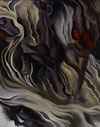 rgia O’Keeffe and Alfred Stieglitz has been widely studied, but less is known about O’Keeffe’s intense connection with Harlem Renaissance writer Jean Toomer. This focused exhibition explores the relationship of these three artists as seen through the lens of about six works from the Cantor’s collection along with correspondence among the artists. Works include O’Keeffe’s gem-like painting Seaweed, photographs by Stieglitz, and Toomer’s modernist novel, Cane. IMAGE: Georgia O'Keeffe (U.S.A., 1887–1986), Seaweed, 1927. Oil on canvas. Gift of The Georgia O'Keeffe Foundation, an anonymous donor, and the Committee for Art Acquisitions Fund, 1997.96. © 2015 Georgia O'Keeffe Museum/Artists Rights Society (ARS), New York
rgia O’Keeffe and Alfred Stieglitz has been widely studied, but less is known about O’Keeffe’s intense connection with Harlem Renaissance writer Jean Toomer. This focused exhibition explores the relationship of these three artists as seen through the lens of about six works from the Cantor’s collection along with correspondence among the artists. Works include O’Keeffe’s gem-like painting Seaweed, photographs by Stieglitz, and Toomer’s modernist novel, Cane. IMAGE: Georgia O'Keeffe (U.S.A., 1887–1986), Seaweed, 1927. Oil on canvas. Gift of The Georgia O'Keeffe Foundation, an anonymous donor, and the Committee for Art Acquisitions Fund, 1997.96. © 2015 Georgia O'Keeffe Museum/Artists Rights Society (ARS), New York
Shifting Currents: Highlights from the 20th-Century Chinese Collection
Through September 28, 2015
Madeleine H. Russell Gallery
The Cantor’s Asian collection features works in a v ariety of media. With especially strong holdings of Chineseand Japanese art, the collection comprises more than 5,000 objects and spans 3000 BCE to the late 20th century. Currently on view in the Cantor’s Asian galleries are works illuminating the many cultures of Asia—East, South, Southeast, and the Himalayas. This new selection focuses on the art of 20th-century China. IMAGE: Attributed to Feng Zikai (China, 1898–1975), Only the Mirror Knows the Beauty of a Poor Girl, c. 1940s. Ink and color on paper. Gift of Kevin Weis, 1990
ariety of media. With especially strong holdings of Chineseand Japanese art, the collection comprises more than 5,000 objects and spans 3000 BCE to the late 20th century. Currently on view in the Cantor’s Asian galleries are works illuminating the many cultures of Asia—East, South, Southeast, and the Himalayas. This new selection focuses on the art of 20th-century China. IMAGE: Attributed to Feng Zikai (China, 1898–1975), Only the Mirror Knows the Beauty of a Poor Girl, c. 1940s. Ink and color on paper. Gift of Kevin Weis, 1990
Drama of Heaven and Earth: The Theatrical Traditions of Japan
Through September 28, 2015
Madeleine H. Russell Gallery
During medieval and early-modern times, the Japanese theatrical art of Noh developed from a form of pop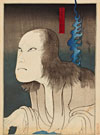 ular performance to the solemn, abstract drama it is today. Noh’s later popularity with the ruling shogunate enabled kabuki theater, which came out of the raucous atmosphere of the pleasure quarters, to flourish during the Edo period (1615–1868). This exhibition presents masks, prints, ceramics, and other visual materials associated with the dramatic arts of Noh, kabuki, kyogen, bugaku, and kagura, demonstrating the parallel trajectories of these separate yet interrelated traditions. Approximately 25 works on display. IMAGE: Konishi Hirosada (Japan, c. 1810–1864), Togoro’s Wife Osan, c. 1850–1852. Woodblock print. Committee for Art Acquisitions Fund, 1986.24
ular performance to the solemn, abstract drama it is today. Noh’s later popularity with the ruling shogunate enabled kabuki theater, which came out of the raucous atmosphere of the pleasure quarters, to flourish during the Edo period (1615–1868). This exhibition presents masks, prints, ceramics, and other visual materials associated with the dramatic arts of Noh, kabuki, kyogen, bugaku, and kagura, demonstrating the parallel trajectories of these separate yet interrelated traditions. Approximately 25 works on display. IMAGE: Konishi Hirosada (Japan, c. 1810–1864), Togoro’s Wife Osan, c. 1850–1852. Woodblock print. Committee for Art Acquisitions Fund, 1986.24
Fatal Laughs: The Art of Robert Arneson
Through October 5, 2015
Oshman Family Gallery
Robert Arneson revolutionized the medium of clay, transforming it from a “craft” medium into “fine art.” Over a career of more than 40 years—frequently using hims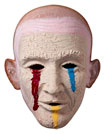 elf as a subject—he explored ideas for art that were outside the conventional repertory, including those involving physical pain and psychological expression. Moreover, he did not flinch at sensitive topical subjects, including many that were sexual, racial, or political in character. Works in this exhibition include the 1964 Funk object His and Hers, which irreverently explores sexual and scatological subject matter while also considering the traditional function of ceramics. In three works from the 1970s, Assassination of a Famous Nut Artist, Splat, and Flip and Flop, the artist’s image is a vehicle for anguish and pain. In the latest works from the 1980s, Global Death and Destruction and Wolf Head, Arneson proves that clay is a powerful art medium. Learn more IMAGE: Robert Arneson (U.S.A., 1930–1992), Primary Discharge, 1990. Earthenware and glaze. Cantor Arts Center Collection, Given in Memory of Professor A. L. Schawlow by John F. and Barbara L. Holzrichter, 2009.75 © Estate of Robert Arneson/Licensed by VAGA, New York, NY
elf as a subject—he explored ideas for art that were outside the conventional repertory, including those involving physical pain and psychological expression. Moreover, he did not flinch at sensitive topical subjects, including many that were sexual, racial, or political in character. Works in this exhibition include the 1964 Funk object His and Hers, which irreverently explores sexual and scatological subject matter while also considering the traditional function of ceramics. In three works from the 1970s, Assassination of a Famous Nut Artist, Splat, and Flip and Flop, the artist’s image is a vehicle for anguish and pain. In the latest works from the 1980s, Global Death and Destruction and Wolf Head, Arneson proves that clay is a powerful art medium. Learn more IMAGE: Robert Arneson (U.S.A., 1930–1992), Primary Discharge, 1990. Earthenware and glaze. Cantor Arts Center Collection, Given in Memory of Professor A. L. Schawlow by John F. and Barbara L. Holzrichter, 2009.75 © Estate of Robert Arneson/Licensed by VAGA, New York, NY
Word as Image: Highlights of the Marmor Collection
Through October 26, 2015
Freidenrich Family Gallery
While artists throughout history have integrated words into their works, modern and contemporary artists have given them a significant position and function—as demonstrated in this  focused installation of prints and drawings. Highlights include Ed Ruscha’s iconic screen print Hollywood; Bruce Nauman’s first word-image print, Raw-War; and Jasper Johns’s large-scale lithograph with lead collage, No, on view at the Cantor for the first time. IMAGE: Allen Ruppersberg (U.S.A., b. 1944), The Color of Pink, 1988. Screenprints on aluminum. Cantor Arts Center collection, Gift of the Marmor Foundation (Drs. Michael and Jane Marmor) from the collection of Drs. Judd and Katherine Marmor, 2006.112.a-c
focused installation of prints and drawings. Highlights include Ed Ruscha’s iconic screen print Hollywood; Bruce Nauman’s first word-image print, Raw-War; and Jasper Johns’s large-scale lithograph with lead collage, No, on view at the Cantor for the first time. IMAGE: Allen Ruppersberg (U.S.A., b. 1944), The Color of Pink, 1988. Screenprints on aluminum. Cantor Arts Center collection, Gift of the Marmor Foundation (Drs. Michael and Jane Marmor) from the collection of Drs. Judd and Katherine Marmor, 2006.112.a-c
Astley D. M. Cooper and Mrs. Stanford's Jewels
Through November 16, 2015
Lynn Krywick Gibbons Gallery
Nationally recognized during his time but larg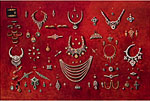 ely forgotten in our own, painter Astley D. M. Cooper (1856–1924) used a faux Egyptian temple as a studio, paid off bar debts with paintings, and threw the wildest parties that San Jose, California had ever seen. With their luscious colors and trompe l’oeil trickery, his landscapes, portraits, and wild western scenes aimed to both please and astonish. This exhibition, curated by Annie Ronan, PhD, Department of Art & Art History, explores Cooper’s life as well as the Bay Area bohemia out of which he first emerged. IMAGE: Astley Cooper (U.S.A., 1856–1924), Mrs. Stanford's Jewel Collection, 1898. Oil on canvas. Cantor Arts Center collection, Stanford Family Collections, JLS.16294
ely forgotten in our own, painter Astley D. M. Cooper (1856–1924) used a faux Egyptian temple as a studio, paid off bar debts with paintings, and threw the wildest parties that San Jose, California had ever seen. With their luscious colors and trompe l’oeil trickery, his landscapes, portraits, and wild western scenes aimed to both please and astonish. This exhibition, curated by Annie Ronan, PhD, Department of Art & Art History, explores Cooper’s life as well as the Bay Area bohemia out of which he first emerged. IMAGE: Astley Cooper (U.S.A., 1856–1924), Mrs. Stanford's Jewel Collection, 1898. Oil on canvas. Cantor Arts Center collection, Stanford Family Collections, JLS.16294
Stefano Della Bella: Capriccio and Fantasy
Through January 4, 2016
Rowland K. Rebele Gallery
During the 17th century, Europeans voraciously collected prints for their capacity to instruct and entertain. This installation features a selection of etchings from the 1640s that Florentine artist Stefano Della Bella (1610-1664) designed to delight the eye. These prints, called capriccios, are intended to be decorative and beautiful. Their iconography can be erotic, irrational, playful, morbid, graceful, or violent-anything to stimulate the viewer's imagination while showcasing Della Bella's exceptional dexterity and capacity for invention. IMAGE: Stefano Della Bella (Italy, 1610–1664), Plate 2 from the set Ornaments or Grotesques (Ornamenti o grottesche), c. 1647. Etching. Cantor Arts Center Collection, Gift of Andrea Rothe and Jeanne McKee Rothe, 2011.101.2
for their capacity to instruct and entertain. This installation features a selection of etchings from the 1640s that Florentine artist Stefano Della Bella (1610-1664) designed to delight the eye. These prints, called capriccios, are intended to be decorative and beautiful. Their iconography can be erotic, irrational, playful, morbid, graceful, or violent-anything to stimulate the viewer's imagination while showcasing Della Bella's exceptional dexterity and capacity for invention. IMAGE: Stefano Della Bella (Italy, 1610–1664), Plate 2 from the set Ornaments or Grotesques (Ornamenti o grottesche), c. 1647. Etching. Cantor Arts Center Collection, Gift of Andrea Rothe and Jeanne McKee Rothe, 2011.101.2
Empathy
Through January 25, 2016
Robert Mondavi Family Gallery
“Empathy” entered the English language via aesthetics and  psychology in the late 19th century. Today, empathy is discussed not only in the arts and humanities, but also in Silicon Valley, Stanford’s d.school, and the latest neuroscience. We share a deep need to walk in the shoes of another. This exhibition traces the meaning and practice of empathy through artistic representations of Buddhist compassion; Christianity’s commandment to love our neighbor; Enlightenment moral philosophy; and Civil Rights-era photography. It accompanies the “Thinking Matters” course taught by Jane Shaw, professor of religious studies. Approximately 18 works on display. IMAGE: Hieronymus Bosch (the Netherlands, c. 1450–1516), Last Judgment, c. 1510. Oil on panel. Lent by Kirk Edward Long
psychology in the late 19th century. Today, empathy is discussed not only in the arts and humanities, but also in Silicon Valley, Stanford’s d.school, and the latest neuroscience. We share a deep need to walk in the shoes of another. This exhibition traces the meaning and practice of empathy through artistic representations of Buddhist compassion; Christianity’s commandment to love our neighbor; Enlightenment moral philosophy; and Civil Rights-era photography. It accompanies the “Thinking Matters” course taught by Jane Shaw, professor of religious studies. Approximately 18 works on display. IMAGE: Hieronymus Bosch (the Netherlands, c. 1450–1516), Last Judgment, c. 1510. Oil on panel. Lent by Kirk Edward Long
Warriors, Courtiers, and Saints: The Etchings of Jacques Callot
Through February 15, 2016
Gallery for Early European Art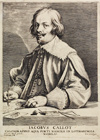
Etcher Jacques Callot (1592–1635) revolutionized French printmaking in the 17th century. During his brief career, Callot developed a distinctively light and fluid style to naturalistically depict violent and divisive subjects. The 39 prints in this installation indicate how the political, economic, and social fallout of Europe’s devastating Thirty Years’ War (1618–1648) shaped Callot’s times and influenced his art. IMAGE: Lucas Vosterman (the Netherlands, 1595–1675), Portrait of Jacques Callot, c. 1645. Etching and engraving. Robert M. Loeser Collection, 1944.2.60
Mining the Ancient
October 14, 2015–August 29, 2016
Oshman Family Gallery
Artists throughout the ages have looked to the past to unearth inspiration. Mining the Ancient presents the work of six contemporary artists who take their cue from the lan guage of the ancient and find inspiration for their sculptural practices in fragments of the past. Juxtaposed with key historical works from the Cantor’s ancient art collection, this group exhibition explores the ways in which some of the most recent art practice of today creates fantastic dialogues with some of the oldest art objects in our civilization’s history. IMAGE:Kris Martin (Belgium b. 1972), Sommerferienewigkeitsgefuhl, 2014. Bronze. Collection of Mike Krieger and Kaitlyn Trigger. Image Courtesy Sies + Höke,Düsseldorf, Photographed by Achim Kukulies, Düsseldorf
guage of the ancient and find inspiration for their sculptural practices in fragments of the past. Juxtaposed with key historical works from the Cantor’s ancient art collection, this group exhibition explores the ways in which some of the most recent art practice of today creates fantastic dialogues with some of the oldest art objects in our civilization’s history. IMAGE:Kris Martin (Belgium b. 1972), Sommerferienewigkeitsgefuhl, 2014. Bronze. Collection of Mike Krieger and Kaitlyn Trigger. Image Courtesy Sies + Höke,Düsseldorf, Photographed by Achim Kukulies, Düsseldorf
Showing Off: Identity and Display in Asian Costume
October 14, 2015–May 23, 2016
Madeleine H. Russell Gallery
Fashion is a form of language. What we wear b roadcasts critical information about us and serves as a visible indicator of social rank, profession, ethnicity, or status. This exhibition of Asian textiles and other works from the Cantor’s collection demonstrates how costume and objects of personal adornment functioned as a method of identification and display from the late 18th century to today. Ranging from Qing court costumes to Indonesian textiles, the selection on view spotlights visual symbols while showcasing rarely displayed garments. IMAGE: Artist unknown (China, 19th century), Man’s Dragon Robe, c. 1821–1850. Silk tapestry woven in gold, silver and colors (k’o-ssu). Cantor Arts Center collection, Gift of Colonel and Mrs. John Young, 1976.75
roadcasts critical information about us and serves as a visible indicator of social rank, profession, ethnicity, or status. This exhibition of Asian textiles and other works from the Cantor’s collection demonstrates how costume and objects of personal adornment functioned as a method of identification and display from the late 18th century to today. Ranging from Qing court costumes to Indonesian textiles, the selection on view spotlights visual symbols while showcasing rarely displayed garments. IMAGE: Artist unknown (China, 19th century), Man’s Dragon Robe, c. 1821–1850. Silk tapestry woven in gold, silver and colors (k’o-ssu). Cantor Arts Center collection, Gift of Colonel and Mrs. John Young, 1976.75
Missing Persons
November 11, 2015–March 21, 2016
Freidenrich Family Gallery
The diverse works in this exhibition, including some 50 photographs, prints, artist books, and historical ephemera, dramatize the loss of those made missing by time, deat h, disaster, politics, or artistic composition. A silhouette portrait by Raphaelle Peale records the trace of a person’s profile by capturing a momentary shadow. Self-portraits by Lee Friedlander and Laura Volkerding play with shadow, absence, and blankness, suggesting the presence of a person who is not directly on view. Contemporary artists such as Glenn Ligon, Kara Walker, and Ester Hernandez address the missing through the lenses of history and oppression. IMAGE: Raphaelle Peale, U.S.A., c. 1820. Portrait of H.L. Silhouette cutout. Committee for Art Acquisitions Fund, 1978.46
h, disaster, politics, or artistic composition. A silhouette portrait by Raphaelle Peale records the trace of a person’s profile by capturing a momentary shadow. Self-portraits by Lee Friedlander and Laura Volkerding play with shadow, absence, and blankness, suggesting the presence of a person who is not directly on view. Contemporary artists such as Glenn Ligon, Kara Walker, and Ester Hernandez address the missing through the lenses of history and oppression. IMAGE: Raphaelle Peale, U.S.A., c. 1820. Portrait of H.L. Silhouette cutout. Committee for Art Acquisitions Fund, 1978.46
Word as Image II: Highlights from the Marmor Collection
December 2, 2015–March 14, 2016
Lynn Krywick Gibbons Gallery
Words have figured in various guises throughout the history of art, frequently appearing in liturgical contexts including illuminated manuscripts in the Middle Ages or decoratively ornamented Qu’ranic writings from the Ottoman Empire. Throughout the 20th century, artists have used texts and lettering to reference a newly prevalent culture of mass production, to blur the lines between popular culture and fine art, and to upend seemingly simple meanings. This selection of works on paper ranges from an early Cubist etching by Georges Braque to the deadpan compositions and wordplay of Jasper Johns and Bruce Nauman.
Speed and Power
January 13–April 4, 2016
Rowland K. Rebele Gallery
People living in the 20th century witnessed an unprecedented—and often frightening—acceleration in the pace of everyday life, wrought by the introduction of a host of new travel technologies. Starting with Europe’s big cities and traveling on across the Atlantic, the exhibition will explore the many ways that trains, planes, and automobiles have shaped modern urban life and how artists have integrated the interrelated themes of speed and power into their work. Guest curator: Mark Braude, lecturer, Stanford University.
Red Horse: Drawings of the Battle of the Little Bighorn
January 16–May 9, 2016
Ruth Levison Halperin Gallery
This exhibition presents 12 ledger drawings by Red Horse, a Minneconjou Lakota Sioux warrior who fought a gainst Custer and the 7th Cavalry at the Battle of the Little Bighorn in June 1876. Selected from a group of 42 drawings that chronicle the battle, the images depict scenes such as combat on horseback, wounded and dead warriors and soldiers, and Native Americans leaving the battlefield. The exhibition brings together key collaborators from Stanford and its communities to explore these indigenous-centered illustrations from diverse perspectives. Taking an interdisciplinary approach, the exhibition highlights the dynamic ways Red Horse’s drawings continue to function as an artist’s narrative of this important moment in American and Native American history. IMAGE: Red Horse (Minneconjou Lakota Sioux, 1822-1907), Untitled from the Red Horse Pictographic Account of the Battle of the Little Bighorn (detail), 1881. Graphite, colored pencil, and ink. NAA MS 2367A, 08570700. National Anthropological Archives, Smithsonian Institution
gainst Custer and the 7th Cavalry at the Battle of the Little Bighorn in June 1876. Selected from a group of 42 drawings that chronicle the battle, the images depict scenes such as combat on horseback, wounded and dead warriors and soldiers, and Native Americans leaving the battlefield. The exhibition brings together key collaborators from Stanford and its communities to explore these indigenous-centered illustrations from diverse perspectives. Taking an interdisciplinary approach, the exhibition highlights the dynamic ways Red Horse’s drawings continue to function as an artist’s narrative of this important moment in American and Native American history. IMAGE: Red Horse (Minneconjou Lakota Sioux, 1822-1907), Untitled from the Red Horse Pictographic Account of the Battle of the Little Bighorn (detail), 1881. Graphite, colored pencil, and ink. NAA MS 2367A, 08570700. National Anthropological Archives, Smithsonian Institution
Into the Forest: Landscape as Subject and Studio in 19th-Century France
February 3–July 4, 2016
Robert Mondavi Family Gallery
This installation of prints, drawings, and photographs explores how French artists depicted the landscape in the modern age and approached making art “en plein air” (in the open air). The phenomenon of making art outdoors took shape in the early decades of the 19th century with the experimental Barbizon School of painters and fully flourished under the Impressionists. Exhibition highlights include photographs by painter James Tissot (1836–1902), a rare cliché-verre—a drawing reproduced using a photographic process—by Jean-Baptiste Camille Corot (1796–1875), and prints by Camille Pissarro (1831–1903). IMAGE: Jean-Baptise Camille Corot (1796–1875), Souvenir of Ostia, 1855. Cliché-verre. Committee for Art Acquisitions Fund, 1987.34
how French artists depicted the landscape in the modern age and approached making art “en plein air” (in the open air). The phenomenon of making art outdoors took shape in the early decades of the 19th century with the experimental Barbizon School of painters and fully flourished under the Impressionists. Exhibition highlights include photographs by painter James Tissot (1836–1902), a rare cliché-verre—a drawing reproduced using a photographic process—by Jean-Baptiste Camille Corot (1796–1875), and prints by Camille Pissarro (1831–1903). IMAGE: Jean-Baptise Camille Corot (1796–1875), Souvenir of Ostia, 1855. Cliché-verre. Committee for Art Acquisitions Fund, 1987.34
Myth, Allegory, and Faith: The Kirk Edward Long Collection of Mannerist Prints
February 10–June 20, 2016
Pigott Family Gallery
Selected from the Kirk Edward Long collection of 16th-century prints, this exhibition illuminates the development of the 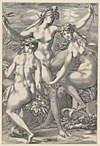 Mannerist style in Italy, traces its dissemination and adaptation for both secular and religious purposes, and follows its eventual transformation into the Baroque style at the end of the century. The exhibition features some 140 engravings, etchings, woodcuts, and chiaroscuro woodcuts by such renowned artists as Federico Barocci, Parmigianino, Hendrick Goltzius, and Annibale Carracci, and by such famous printmakers as Marcantonio Raimondi, Giorgio Ghisi, and Cornelis Cort. IMAGE: Pierre Milan (France, c. 1500–c. 1557) after Rosso Fiorentino (France, b. Italy, 1494–1540), The Three Fates, 1538–40. Engraving. Lent by Kirk Edward Long
Mannerist style in Italy, traces its dissemination and adaptation for both secular and religious purposes, and follows its eventual transformation into the Baroque style at the end of the century. The exhibition features some 140 engravings, etchings, woodcuts, and chiaroscuro woodcuts by such renowned artists as Federico Barocci, Parmigianino, Hendrick Goltzius, and Annibale Carracci, and by such famous printmakers as Marcantonio Raimondi, Giorgio Ghisi, and Cornelis Cort. IMAGE: Pierre Milan (France, c. 1500–c. 1557) after Rosso Fiorentino (France, b. Italy, 1494–1540), The Three Fates, 1538–40. Engraving. Lent by Kirk Edward Long
Contemporary Perspectives on the Battle of the Little Big Horn
February 24–June 13, 2016
Rhemus Family Gallery
Indigenous undergraduates Sarah Sadlier and Isabella Shey Robbins will lead a fall, student-initiated course that will yield an exhibition designed to accompany the Cantor’s major show Red Horse: Drawings of the Battle of the Little Bighorn. The student-curated exhibition will include works by contemporary indigenous artists and offer their modern-day perspectives on this historic battle as well as on other indigenous events and issues. Karen Biestman, Associate Dean and Director of Stanford’s Native American Cultural Center, will serve as faculty sponsor.
Blood in the Sugar Bowl
March 30–July 4, 2016
Lynn Krywick Gibbons Gallery
This exhibition focuses on sugar plantation slavery during the peak of the sugar trade, the late 18th–mid-19th century. On display are sugar bowls from the Cantor’s collection, Henry Corbould’s illustration Fashionable Women Pouring Tea, James Gillray’s caricature The Anti-Saccharites, several volumes from Stanford University Libraries Special Collections including James Hakewill’s beautiful plantation views from his 1821 Picturesque Tour of the Island of Jamaica and William Blake’s depictions of slave torture in his 1777 Narrative, of a five years’ expedition, against the revolted Negroes of Surinam. Personalizing the slave narrative are Benjamin M’Mahon’s Jamaica Plantership and other audio excerpts of texts written by slaves and sugar plantation employees. D. R. Wakefield’s 2004 series Resistance Is Useless: Portraits of Slaves from the British West Indies is also on display. Student curator: Stanford PhD candidate and Mellon Curatorial Research Assistant Rachel Newman.
Intimate Frontiers: The Male Gaze in Fin-de-Siècle Vienna
April 13–August 8, 2016
Patricia S. Rebele Gallery
Using the Cantor’s extensive collection of photographs, sketches, and decorative objects from fin-de-siècle Vienna, this exhibition explores how male artists manipulated images of women in an attempt to control and define women’s roles and status. During this time, norms about women’s intimate relationships with lovers and friends and the structure of the interior, domestic sphere were greatly shifting. The exhibition presents photographic prints by Heinrich Kühn, numerous sketches by Oskar Kokoschka, decorative works from 1883 Austria, works by Max Kurzwell, and more. Student curator: Stanford undergraduate and Cantor Scholar Alex Zivkovic.
An Oasis in Glass
April 13–August 8, 2016
Rowland K. Rebele Gallery
This exhibition showcases 4th-century mosaics, beads, flasks, and other glass objects created during the Roman occupation of Syria and Egypt. Displayed in a space that replicates the desert’s dunes and wide expanses, each object serves as a kind of tiny experiential oasis what with light boxes amplifying the works’ sparkle and transparency. The show also incorporates themes from classical Arabic poetry. Student curator: Stanford undergraduate and Cantor Scholar Evelina Yarmit.
Soulmaker: The Times of Lewis Hine
May 25–September 26, 2016
Ruth Levison Halperin Gallery
One hundred years ago, the photographer Lewis Hine travelled to mills and factories in New England and the South, photographing child laborers. His photographs are among the most haunting images of children ever made. In this exhibition, a beautiful selection of Hine’s child-labor photographs is juxtaposed with stunning contemporary photographs taken by photographer Jason Francisco (Stanford M.F.A., ’89) of those same mill and factory sites as they look now. Guest curator: Alexander Nemerov, Carl and Marilynn Thoma Provostial Professor in the Arts and Humanities and Chair of the Department of Art & Art History, Stanford University.
California: The Art of Water
July 13–November 21, 2016
Pigott Family Gallery
This major exhibition is devoted to artistic portrayals of California’s most precious—and currently scarce—resource. It presents more than 70 works by eminent artists including Ansel Adams, Albert Bierstadt, David Hockney, Richard Misrach, and Carleton Watkins, and features images from a variety of regions around the state, during the Gold Rush to the present. The exhibition offers a compelling aesthetic experience set within debates about water that have spanned the 19th century to the present. It is also accompanied by an array of public programs designed to raise awareness and appreciation of California’s complicated water issues.
| RELATED LINKS |
|---|
| Exhibition Archives |
| Docent Tours |
| Exhibition Catalogues |
| Coming Soon |
Rodin! The Complete Stanford Collection
Read More




